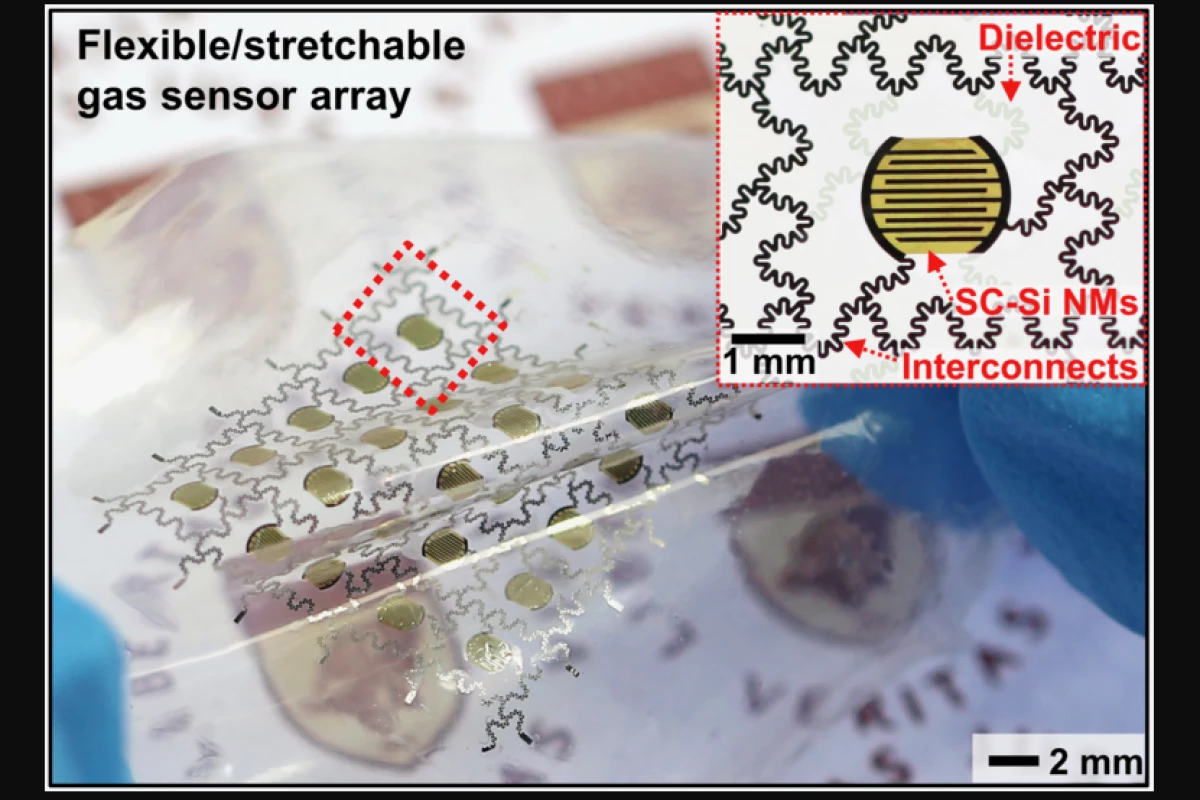While we have been hearing about the development of health-monitoring implantable sensors, most such devices would have to be surgically removed once no longer needed. An experimental new one, however, would just harmlessly dissolve.
Created by a team at Pennsylvania State University's Institute for Computational and Data Sciences, the thin, flexible device is designed to detect different forms of nitric oxide (NO) and nitrogen dioxide (NO2) gas within the body.
NO is produced naturally by the body, helping to increase blood flow by relaxing and widening blood vessels. NO2, on the other hand, may be present in the environment – if inhaled, it can lead to conditions such as chronic obstructive pulmonary disease.
Ordinarily, patients recovering from medical procedures are monitored for such gases utilizing external devices. According to lead scientist Prof. Huanyu Cheng, not only is that sort of equipment bulky, but it's also likely not as accurate as an implantable sensor would be.
His team's device incorporates an elastic polymer base, phosphorous-doped magnesium conductors, silicon circuitry, and other components made of biocompatible, biodegradable materials. Based on readable changes that occur in the sensor's electrical characteristics, it's possible to determine concentrations of NO and NO2 within the surrounding environment.

So far, tests conducted in humid conditions and aqueous solutions have reportedly shown that the sensor could perform in "the harsh conditions of the body" throughout a patient's recovery period, before dissolving.
A paper on the research – which also involved scientists from Korea University and the Korea Institute of Science and Technology – was recently published in the journal NPG Asia Materials.
Source: Pennsylvania State University




